Tantalum
Tantalum is a naturally occurring rare earth metal part of the transition metals on the periodic table of elements. Tantalum, for a long time, was used in the production of electronics and arms developments. Tantalum is completely pure and hypoallergenic and is one of the most scratch resistant metals on the market. Tantalum can also be stretched to slightly larger sizes unlike all other precious metals although it is best to be sized by the manufacturers of the ring and can also have minor scratches buffed/polished out.
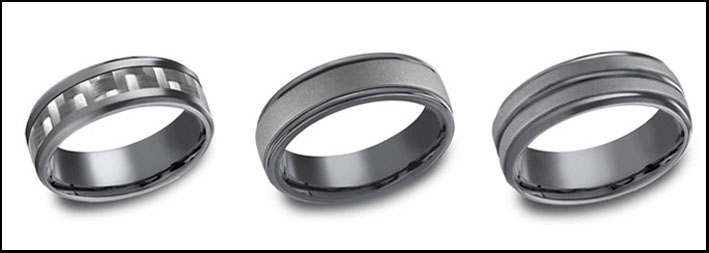 *
*
Tungsten Carbide
Tungsten carbide is made by combining tungsten, carbon and nickel powder. They are then pressure molded in a dye that heats the metal up to 3600 degrees bonding the metals together. This strengthens the metal making it very dense and scratch resistant but leaves the metal prone to chipping, cracking or breaking. Tungsten cannot be sized, refurbished or repaired, except by the vendors that create the rings. Tungsten can only be removed from fingers using a type of vice to break the band off.
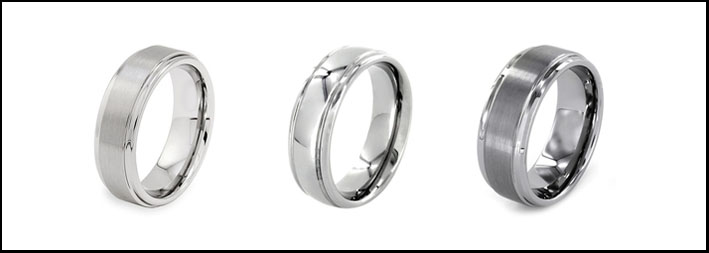 *
*
Titanium
Titanium is created out of titanium heavy alloys that are made using heavy machinery that cuts, shapes and sizes rings to their desired shapes and designs. Titanium, due to its purity, is hypoallergenic. Titanium is very light weight, however is very prone to scratching and is incapable of being sizes, refurbished or repaired. Titanium rings can be cut off using the same tools as precious metal rings (although it is harder).
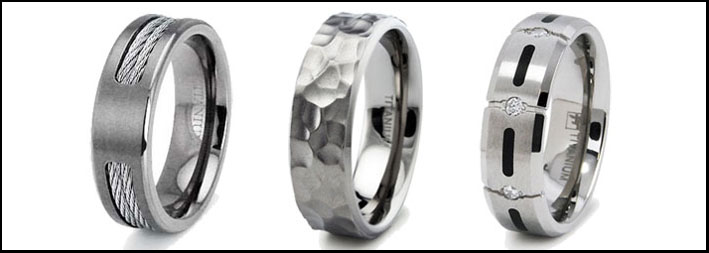 *
*
Cobalt
Cobalt (also known as cobalt chrome) is made of a very sturdy cobalt alloy that has been frequently used in the medical industry before finding use in the jewelry industry. Cobalt has the brightest white color of all the alternative metals and most closely matches the color of white gold or platinum. Due to its malleability, cobalt is virtually shatter-proof and can be made into a variety of shapes, sizes and designs. Cobalt is made through a pressure extrusion method giving it a superior scratch resistance while keeping the metal light weight. Cobalt can be lightly polished but cannot be completely refurbished or sized. Due to their uses in the medical field, cobalt is completely hypoallergenic and can be cut off (with a lot of difficulty) using the same tools used for cutting off precious metals.
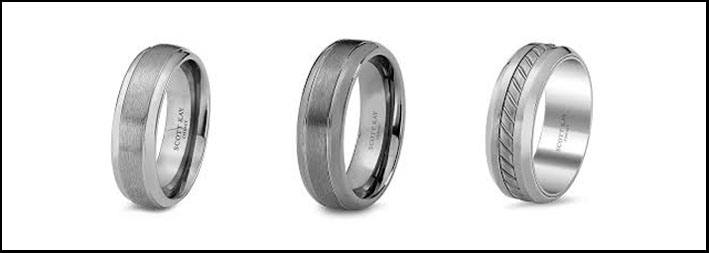 *
*
Stainless Steel
The most common alloy used in stainless steel jewelry is 316L surgical grade which has, for a long time, been used in the medical field. Stainless steel is completely hypoallergenic, can be polished lightly, but are not sizeable. Stainless steel rings are produced in methods like titanium rings and are also easy to scratch. Stainless steel can also be colored using PVD (physical vapor deposition) coating and can give the metal one of the most versatile looks. Stainless steel can only be cut off using a manual jewelers’ saw
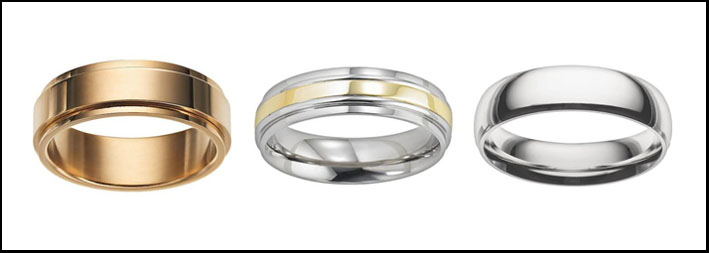 *
*
Damascus Steel
Damascus steel, otherwise known as folded steel, has been used for hundreds of years in the production of weaponry (specifically swords). Two different types of steel that were not individually suitable for weapons developments are folded over and hammered flat at high heats to strengthen the metals. This gives all Damascus steel unique linear patterns that are characteristic of Damascus steel. Damascus steel is very light weight and more scratch resistant than traditional stainless steel or titanium. Damascus steel rings can be cut off like traditional stainless steel.
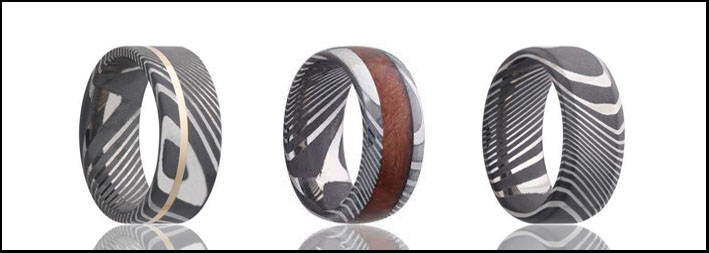 *
*
*Styles shown above may not be available at Wedding Bands & Co.
